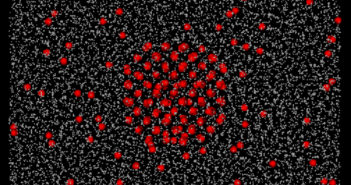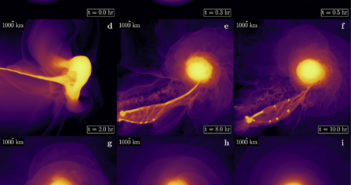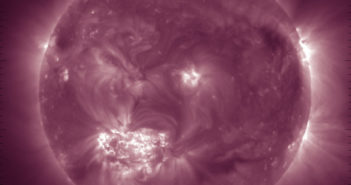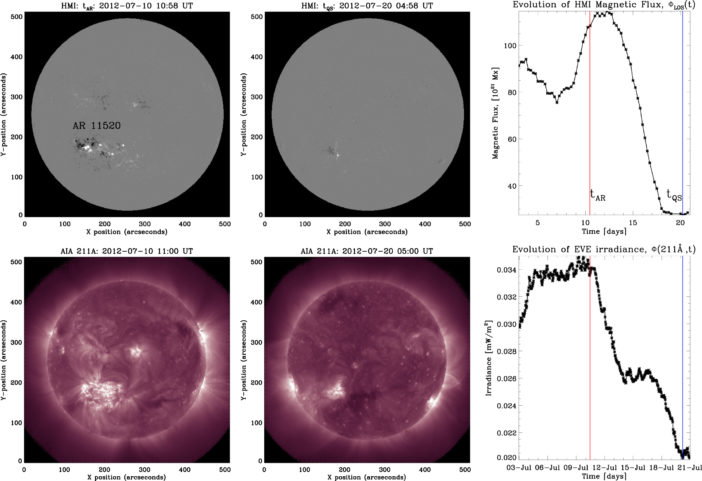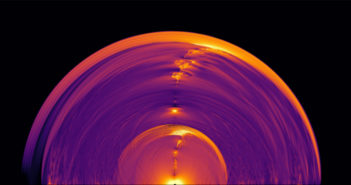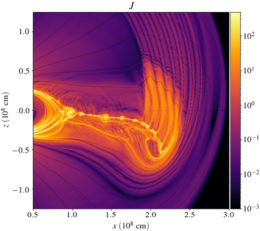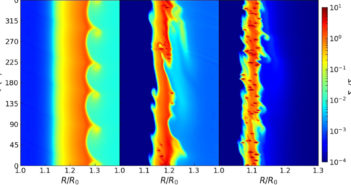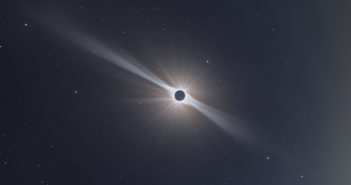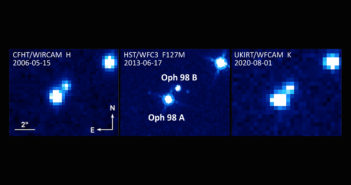
Featured Image: A Wide Planetary-Mass Binary
A new pair of free-floating planetary-mass objects has recently been identified via direct imaging: Oph 98 AB. In a study led by Clémence Fontanive (University of Bern, Switzerland), a team of scientists presents their observations of this set of two bodies locked in an exceptionally wide orbit. In the three views above (click for a closer look), captured at different times with different telescopes, you can see Oph 98 A and B as the two bright objects at the centers of the images. The additional source at the top right is a background star. Fontanive and collaborators show that this binary system consists of two bodies of perhaps 15 and 8 Jupiter masses, separated by around 200 au (for reference, Pluto’s semimajor axis is just 39 au!). The low masses and wide separation of Oph 98 AB make it the lowest binding energy system imaged to date, and it’s sure to offer us new insight into young, free-floating planetary-mass objects. To learn more, check out the original article below.
Citation
“A Wide Planetary-mass Companion to a Young Low-mass Brown Dwarf in Ophiuchus,” Clémence Fontanive et al 2020 ApJL 905 L14. doi:10.3847/2041-8213/abcaf8


